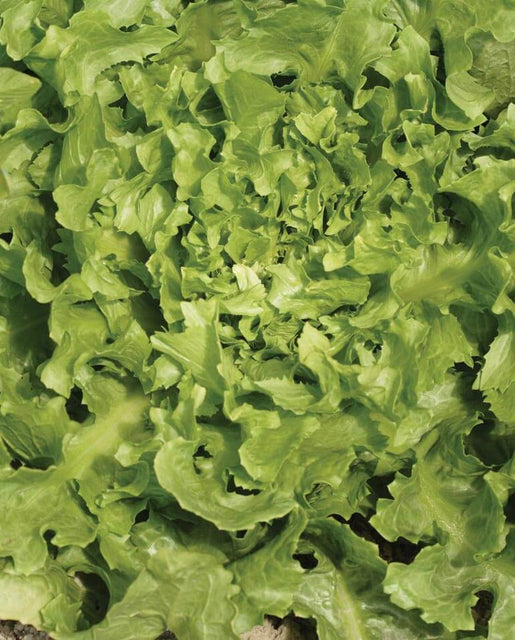For Product Registration and general enquires please contact us

Broadleaf Batavian Escarole
$7.99 – $71.99
Large, broad in shape, with slightly twisted, lettuce-like leaves form tightly packed heads with creamy white hearts.
Shipping & Returns
West Coast Seeds ships anywhere in North America. However, we are not able to ship garlic, potatoes, asparagus crowns, bulbs, onion sets, Mason bee cocoons, or nematodes outside of Canada. We regret, we cannot accept returns or damages for orders outside of Canada. The minimum shipping charge to the US is $9.99.
Description
More details about Broadleaf Batavian Escarole
Endive varieties are divided mainly by leaf shape. Unlike the finely cut leaves of fris̩e, escarole has wider, flatter leaves. Both types grow in a rosette form around a center that can be blanched to increase sweetness and reduce the bitterness. Sow Broadleaf Batavian escarole seeds and bundle the tips of the outer leaves with an elastic band to cut off sunlight from the center. Or fix a plastic disc in place over the center of each plant. Large, broad in shape, with slightly twisted, lettuce-like leaves form tightly packed heads with creamy white hearts. This bulky heirloom dates back to the 1860s, and simply begs to be tossed with bacon or croutons under a hot salad dressing. Matures in 85 days. (Open-pollinated seeds)-
- Heirloom from the 1860s
- Large and spreading
- Dark green, smooth outer leaves
- Open pollinated seeds
- Matures in 85 days
All About Broadleaf Batavian Escarole
Latin
Cichorium endiva (endive) & C. intybus (radicchio)
Family: Asteraceae
Difficulty
Endive is easy.
Radicchio is moderately difficult.
Belgian endive (witloof) is downright challenging – but worth the effort.
Season & Zone
Season: Cool season
Exposure: Full-sun
Timing
Sow after the last frost date and again in mid-summer to take advantage of the fall growing season. Optimal soil temperature: 10-22°C (50-72°F). Seeds sprout in 2-15 days, depending on conditions. In hot weather plants may go to seed quickly, so have new plantings ready to go.
Starting
Either direct seed or start indoors and transplant. Sow seeds 5mm (¼”) deep, and thin or transplant to allow 30-45cm (12-18″) between plants in rows 30-45cm (12-18″) apart.
Days to Maturity
From direct sowing.
Growing
Ideal pH: 6.0-6.5. Enrich soil with compost and add ¼ cup balanced organic fertilizer into the soil beneath each transplant. Rapid, continuous growth is essential for good yields and high quality. Regular watering is essential. Fall plantings can be protected from rain by putting a cloche over them. Endive heads can be blanched to reduce bitterness by placing a cardboard or plastic disc on top. Radicchio requires a good supply of phosphorus and potassium, but will not head and may bolt if there is too much nitrogen available. Days to maturity shown are from date of direct sowing. If transplanting, subtract 10-15 days.
Harvest
Use as a cut and come again crop or let the heads develop and cut at ground level. Many will grow back.
Seed Info
In optimal conditions at least 65% of seeds will germinate. Usual seed life: 3 years. Per 100′ row: 140 seeds, per acre: 40.6M seeds.
Diseases & Pests
Aphids – Water can be used to remove aphids from plants. Wash the plant off with water occasionally as needed early in the day.
Moulds and rot from heavy rains can be prevented by growing under cover. Tip burn is a calcium deficiency within the plant that can be caused by an imbalance with over nutrients. Make sure to add lime to the soil, do not over-fertilize, and harvest just before full maturity.






How to Grow Endive

Step 1: Timing
Sow after the last frost date and again in mid-summer to take advantage of the fall growing season. Optimal soil temperature: 10-22°C (50-72°F). Seeds sprout in 2-15 days, depending on conditions. In hot weather plants may go to seed quickly, so have new plantings ready to go.
Step 2: Starting
Either direct seed or start indoors and transplant. Sow seeds 5mm (¼”) deep, and thin or transplant to allow 30-45cm (12-18″) between plants in rows 30-45cm (12-18″) apart.
Step 3: Growing
Ideal pH: 6.0-6.5. Enrich soil with compost and add ¼ cup balanced organic fertilizer into the soil beneath each transplant. Rapid, continuous growth is essential for good yields and high quality. Regular watering is essential. Fall plantings can be protected from rain by putting a cloche over them. Endive heads can be blanched to reduce bitterness by placing a cardboard or plastic disc on top. Radicchio requires a good supply of phosphorus and potassium, but will not head and may bolt if there is too much nitrogen available. Days to maturity shown are from date of direct sowing. If transplanting, subtract 10-15 days.
Step 4: Germination
Days to maturity: From direct sowing. In optimal conditions at least 65% of seeds will germinate. Usual seed life: 3 years. Per 100′ row: 140 seeds, per acre: 40.6M seeds.
Step 5: Harvest
Use as a cut and come again crop or let the heads develop and cut at ground level. Many will grow back.
Tips!
Disease & Pests: Aphids – Water can be used to remove aphids from plants early in the day. Moulds and rot from heavy rains can be prevented by growing under cover. Tip burn is a calcium deficiency within the plant that can be caused by an imbalance with over nutrients. Make sure to add lime to the soil, do not over-fertilize, and harvest just before full maturity.Additional information
| Matures | in 85 days |
|---|---|
| Season | Cool season biennial |
| Exposure | Full sun |
| Quantity | 1g, 5g, 25g, 250g, 500g |
You must be logged in to post a review.








Reviews
There are no reviews yet.